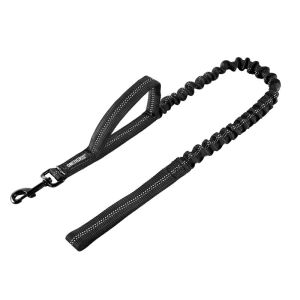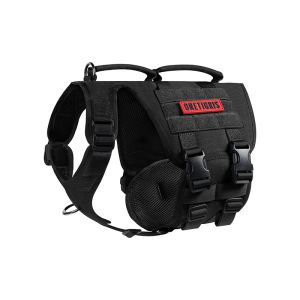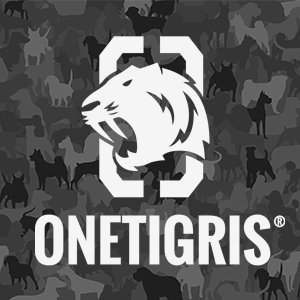

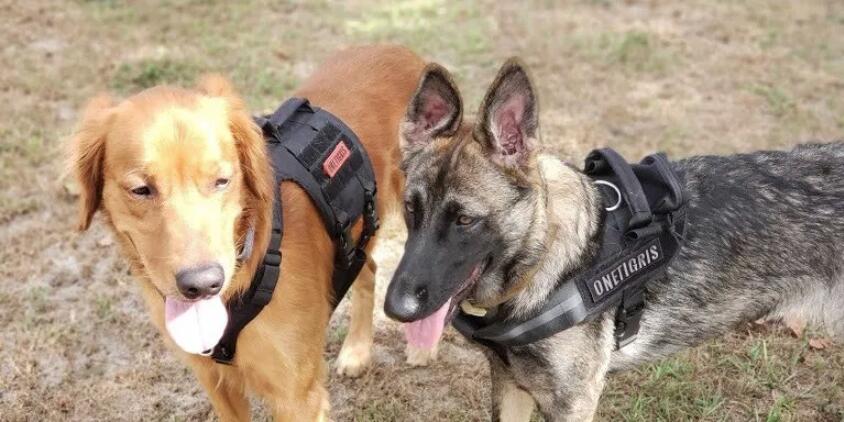
The benefits of a harness when it comes to working with my dogs was somewhat of a surprise! If your like most dog owners you grew up working with your dogs wearing nothing more then a flat collar which is perfectly fine. In fact, you should be able to control your dog in a flat collar as well as you can with any other tool that you might use. However, training your dog is a long process of baby steps. Training your dog to wear a harness can equip you with another tool and some surprising benefits that will help you along the way! Keep reading for my harness recommendations, the benefits I have found in using them and a quick guide to making your pup love it!
Author's Note: This post may contain affiliate links. If you make a purchase after clicking one of my links I may receive a small commission at no extra cost to you! The harnesses provided for this article were provided by OneTigris but all opinions are strictly my own!
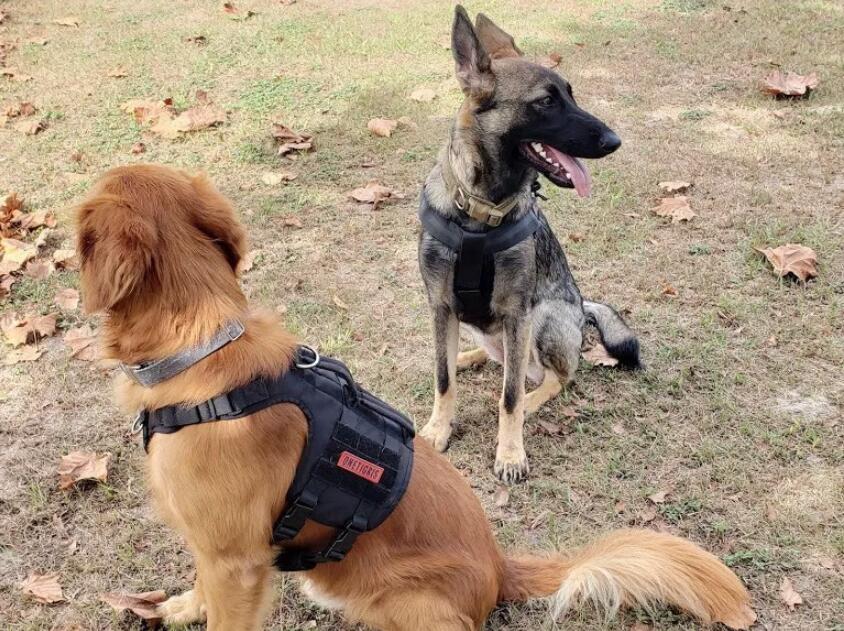
What Are Some Benefits of Getting Your Dog To Wear A Harness?
1. Protecting a Young Dog's Health
Puppies are curious and impulsive creatures. They don’t always make the best choices and sometimes they forget their manners. Since they are babies this is to be expected no matter how much training you have put into them so far or how well they listen to you in the house.
Puppies will decide to lunge at a cat that suddenly appears, another dog walking down the street or decide to chase the ball your neighborhood kids might be playing with. It doesn’t really matter what it is, puppies are highly distractable and still learning what the proper reactions to social situations should be! It’s much safer for your young puppy or untrained older dog to lunge against a harness that distributes the pressure over the chest and back then a collar which puts all the pressure on the neck.
2. Giving Your Dog a Job
Working dog breeds are some of the most popular dog breeds in the country. People love the way they look, the attentive way they look to their owners and the intelligence they display in training. Working dogs are amazing, there is no getting around it and it’s easy to see why they are so well-loved by their owners. The downside of a working dog is that they require something to do. Working dogs without a job or some sort of mental stimulation get bored and become destructive. If you don’t give these dogs a job to do they will find one on their own – and you probably won’t like it.
Putting your dog to work can curb a lot of this behavior. Having your dog wear a harness and teaching them to track by playing ‘find it’ games is a job to your dog. Taking your dog for walks in a harness and having them carry a pack of supplies is a job. Even just wearing a harness and working your dog in obedience is a ‘job’ and wearing a harness can be a good way to teach your dog when you want them to really listen and when you’re just going out to play. There is a reason that service dogs act differently while in a harness and out of a harness. They know when they are ‘working’ and when they can relax.
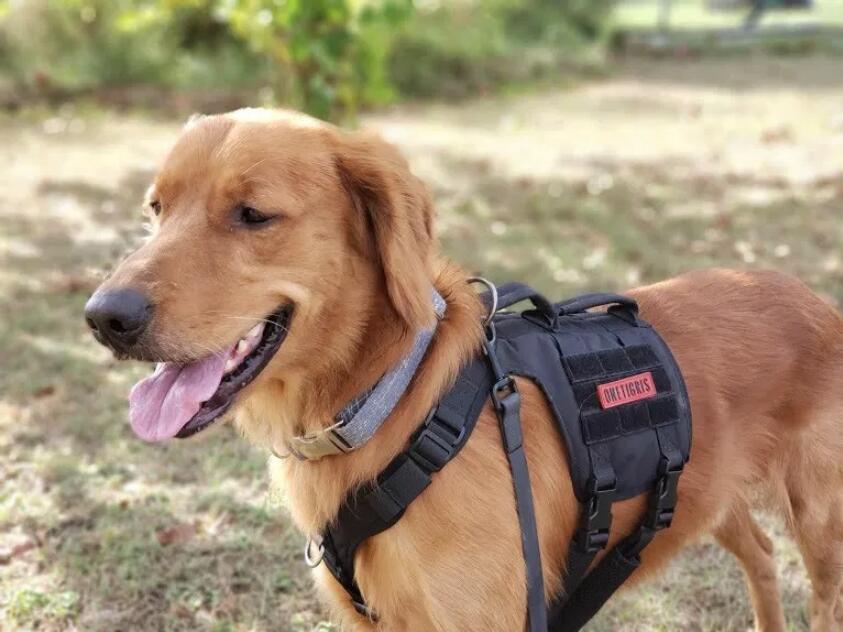
3. Offering Control And Support
There are situations in everyday life that we can’t control. While you can spend time training your dog you can’t control other people’s dogs or the public in general. As a runner, you only have to be charged by a couple of off-leash dogs before this lesson is driven home really well. Both of my dogs are well behaved and easy to control in most situations, however, Echo is young and Connor thinks he wants to chase cats.
Echo tends to get upset when rushed by strange dogs and having a harness means I can grab hold of the harness handle which offers greater control while I deal with the situation and I don’t have to worry about her slipping out of her collar or tangling me up in the leash. With Connor, it means I can keep him closer if I see a stray cat on the road.
The handles can also allow you to help your dogs if your hiking over rough terrain, your dog is older, recovering from an injury, or just a bit on the clumsy side when it comes to jumping in and out of the car. In fact, Connor’s everyday harness is the Gladiator Support Harness. The double handles and harness construction make it perfect for giving your dog a bit of help and while Connor is a young dog he’s a touch on the clumsy side while getting in and out of the truck or navigating obstacles on a trail. He’s just a big lovable doofus really and the harness means I can give him a hand without hurting myself or him in the process.
4. Communication
When you are training a puppy to ignore distractions or working with a dog that doesn’t like strangers or other dogs a harness can be a great tool. Most people have been conditioned to ignore or avoid a dog in a harness (particularly a service or tactical looking harness – cute colored harnesses have less of an effect here). Most of us have been told not to touch ‘working dogs’ and the harness seems to be a clear signal to a lot of people in public.
Many of these harnesses also have velcro sections where you can add badges or signs to further communicate your needs. A small ‘In Training’ ,’Nervous’ or ‘Ask Before Petting’ label on a harness can help you avoid a lot of issues when working with your dog in a public setting and as they are removable you can easily take them off or change them as needed!
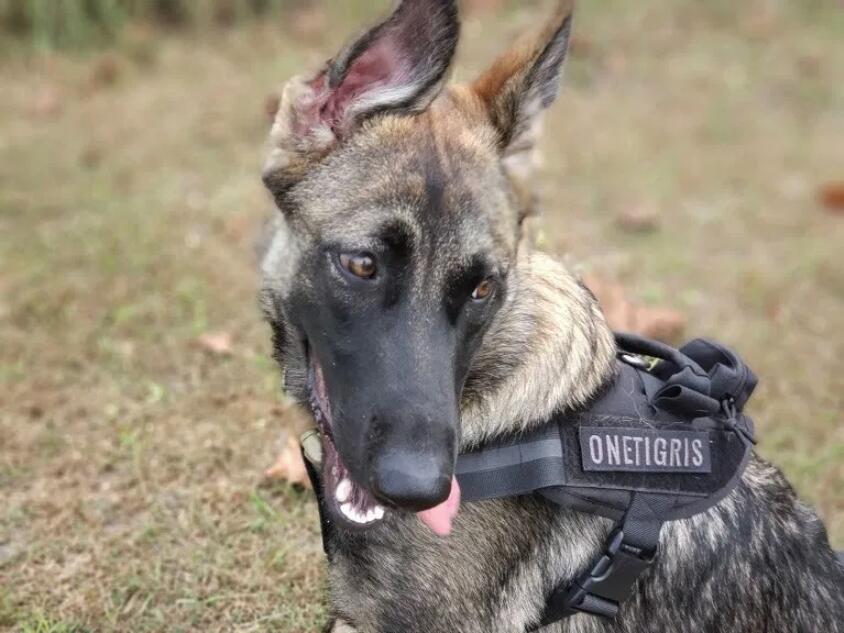
What Sort Of Harness Should I look For?
While there are many types of harnesses available in pet shops with many uses ranging from looking pretty to anti-pulling, I tend to prefer tactical dog gear like that provided by OneTigris and here’s why…
1. MOLLE System
MOLLE Stands for Modular Lightweight Load-carrying Equipment. This is a system of heavy-duty nylon rows that are stitched onto the equipment and allow you to attach various pouches and accessories.
You see MOLLE systems on a lot of hiking and camping gear and tactical dog harnesses are no exception. This makes my harnesses extremely versatile. I can attach a small pouch if I want, a collapsible water bowl, waste disposal bags, extra treats, even an extra leash or training toy if I so desire. I might not use this every time I walk my dogs but the option is there if I want it and I love that. The ability to add packs is especially helpful when I want to take my dog’s camping or hiking and they can carry their own gear. As we discussed in our Hiking with Dogs article – pack space is a premium when you’re on the trail!
2. Extreme Durability
Tactical dog gear is designed for working dogs that spend a great deal of time working in difficult terrain. It’s made to last and not fail despite extreme use and while my dogs are not put in those sorts of situations I like the peace of mind that sort of durability gives me. Can my harness fail? Of course, it can! Anything can and will fail given the right situation but I put a lot more trust in these harnesses then in the typical pet shop variety.
Tactical dog gear such as the Gladiator Support Harness that Connor wears for everyday walks (he still wears the Mammoth Pack for hiking) or the Mad Hound Harness that Echo currently sports have been tested and proven to hold up after a great deal of wear and tear.
3. Breathable Mesh & Comfort
Because these harnesses are designed for dogs to wear in rugged situations they are designed to be comfortable! Between the breathable mesh and padded straps, I know that my dogs can wear these harnesses for several hours with no problems at all! They are also extremely adjustable which is great when you’re buying for a still-growing dog, like Echo.
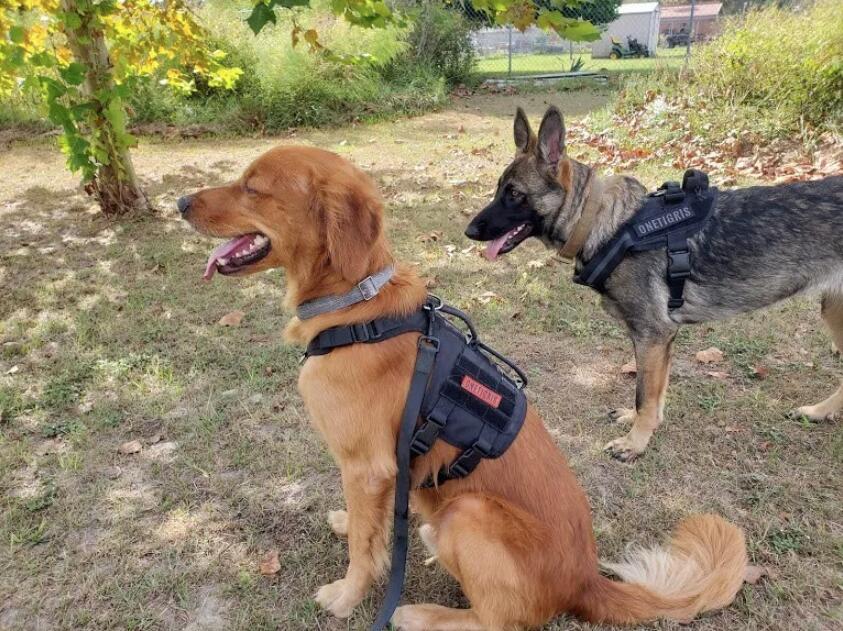
What Harnesses Do Your Dogs Wear?
Currently, Echo is enjoying the Mad Hound! This harness has been perfect for teaching her what it feels like to have something on her back. Eventually, we want Echo to carry her own food and water while hiking and camping and the Mad Hound is a good starting point for this. It’s highly adjustable with a wide reflective strip along the front for walks in the dark and is very easy to take off and put on – which is great when you’re dealing with a squirmy and excitable young dog!
Connor currently had two harnesses! We use the Mammoth Pack when hiking as its large built-in pouches are perfect for carrying his food, water, and treats! For everyday walks, he is sporting the Gladiator support harness. I love the extra padding on the straps and the fact that the double handles allow me to help him in and out of the truck when needed.
I also find that the choice between a front clip and back clip for his leash can be useful in teaching older, stronger dogs how to walk nicely and while Connor is generally pretty good about this we have even made some progress when cats are involved and that’s a pretty big step for him!
How Do You Get Your Dog To Wear A Harness?
The most common comment I have gotten when people see my dogs wearing a harness is that they tried a harness in the past but their dogs hated it. I tend to get a similar reaction when Connor wears his head collar. In both cases, I have found that the aversion is due to a lack of proper conditioning and can be easily fixed! You can teach your dog to love his harness/headcollar and it’s actually very simple!
The trick to making your dog accept practically anything you want to do is to make them associate the activity with a lot of great treats or fun games! If your dog is highly food motivated then you will want to use their favorite treat for this training. If your dog is toy motivated then a favored toy will work just as well!
To start with pick up the harness or headcollar and present it to your dog, if they look at it or sniff it use your marker word (Yes! Good! or click if clicker training) and give them a treat or throw the toy/play a quick game of tug. In the beginning, you should treat/reward the dog for doing anything that doesn’t involve moving away from the equipment. Before too long the will probably come running as soon as you pick it up!
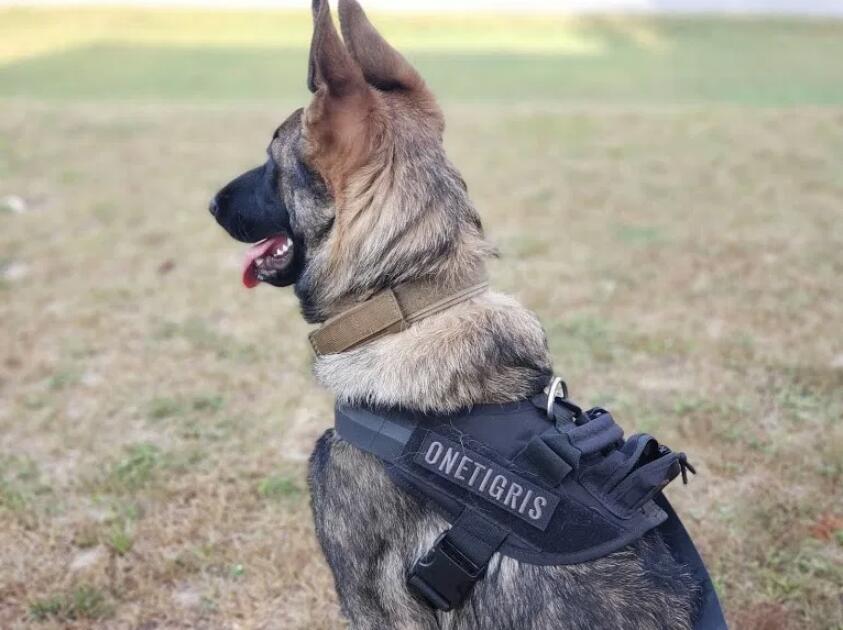
Once they seem to be associating the equipment with something positive you need to start demanding a little bit more before giving the reward. Wait for your dog to touch the harness before rewarding them – it might take a bit of time for them to work out what you want but be patient! When they are eagerly touching the harness for treats you can progress to luring their head or nose through the harness, or settling it upon their back (depending on how your particular harness works), treat and then remove the item. Repeat this step until your dog is completely comfortable and then progress to doing up the straps!
If you take each step slowly and practice it for a few minutes at a time several times a day your pup will soon be racing you to the door to put on the harness! Remember to keep your training sessions upbeat, fun and short! If you or your pup seems to be getting frustrated just put things away and try again later on! Should they continue to resist back up to the previous step and move forward more slowly, some pups take a bit longer to adjust to things going over their heads and around their bodies. If you remain patient you will have trained your dog to wear a harness like a champ!
Credit: Tales From Home
